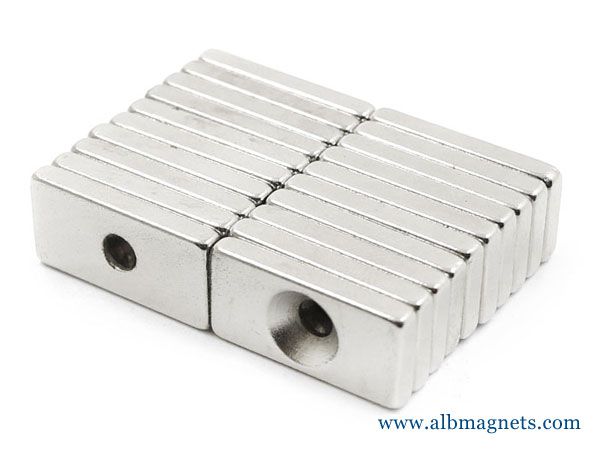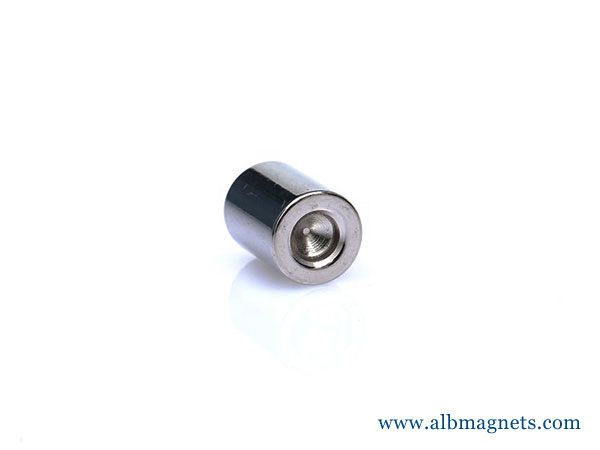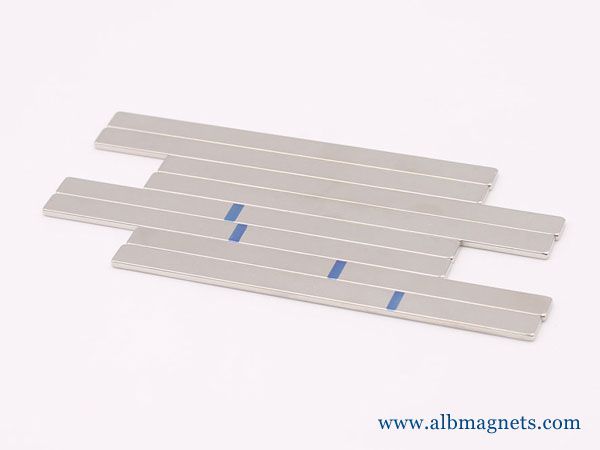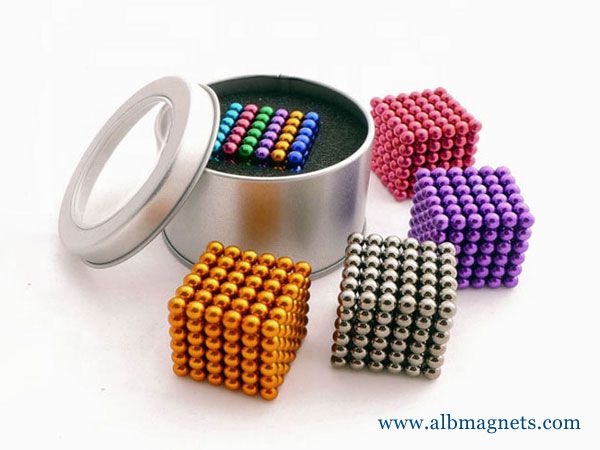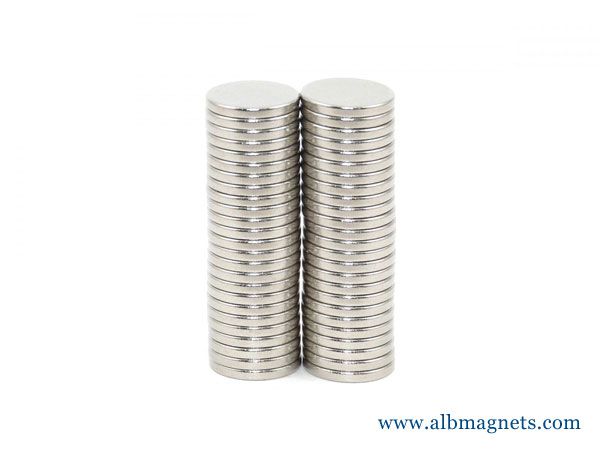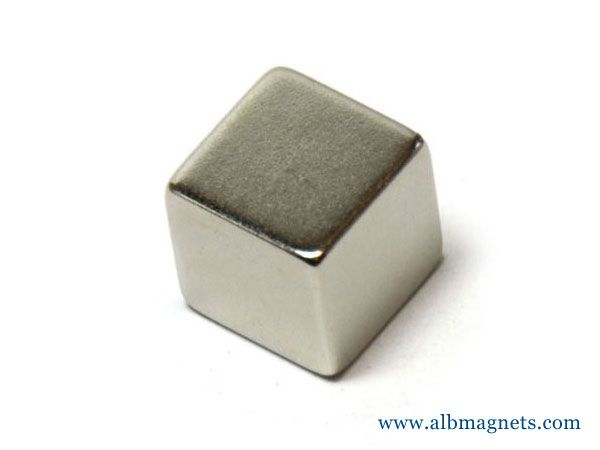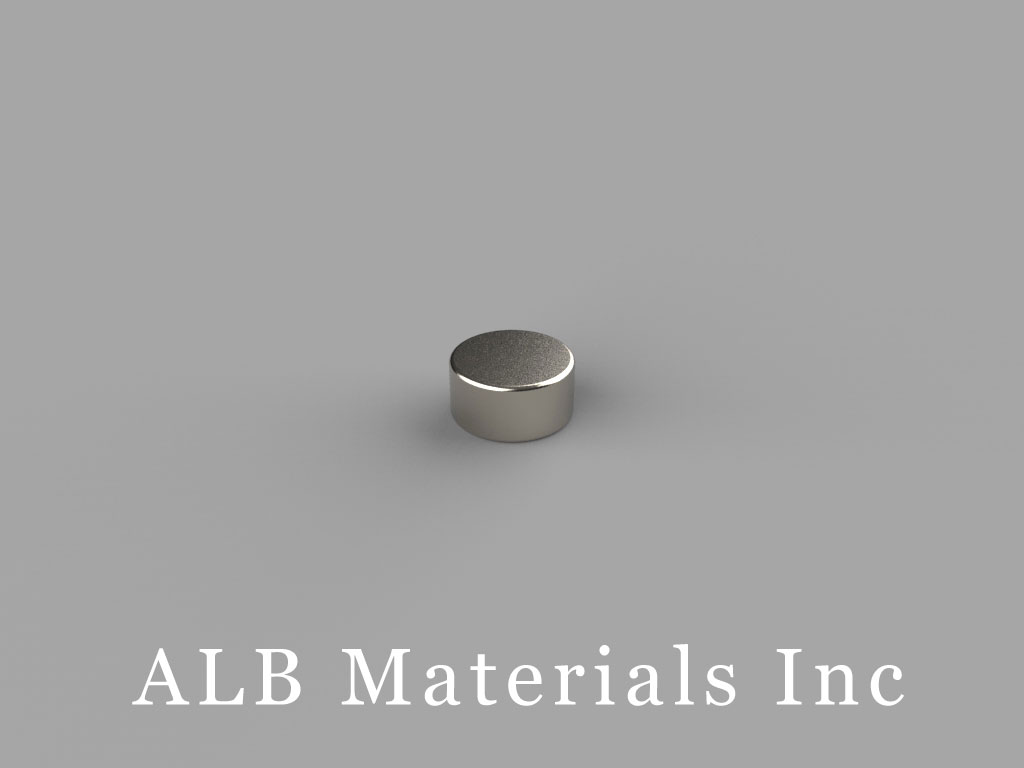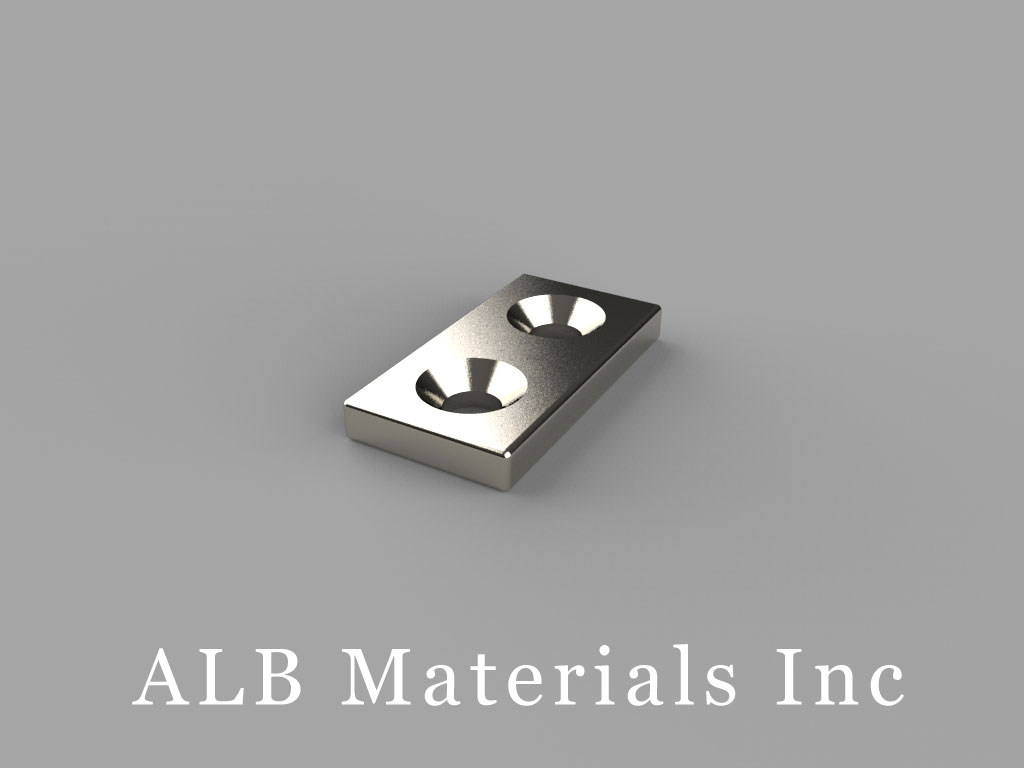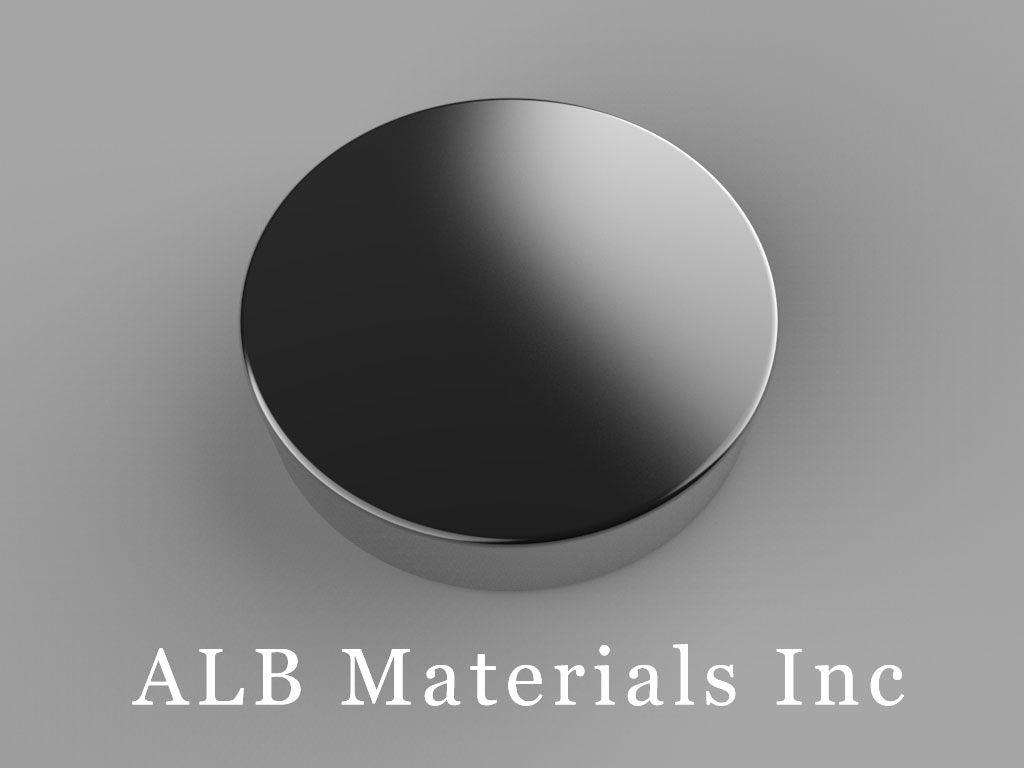401 Ryland St. Ste 200-A,
Reno, NV 89502
United States
E-mail: sales@albmaterials.com
- R-OD13H5ID2-N35 Neodymium Magnet, OD13xID2x5mm Ring Magnet
- BCC9 Neodymium Magnets, 3/4 inch x 3/4 inch x 9/16 inch thick
- D3x5mm Neodymium Magnet, 3 x 5mm Cylinder Magnet
- D81SH Neodymium Magnets, 1/2 inch dia. x 1/16 inch thick
- B-W2H3L5.6-N52 Neodymium Magnet, 5.6x2x3mm Block Magnet
- BAA4 Neodymium Magnets, 5/8 inch x 5/8 inch x 1/4 inch thick
- DXC6 Neodymium Magnets, 1 3/4 inch dia. x 3/8 inch thick
- MMS-D-XC Standard Mounting Magnets
- R-OD24H2ID7-N35 Neodymium Magnet, OD24xID7x2mm Ring Magnet
- D42E Neodymium Magnets, 1/4 inch dia. x 1/8 inch thick
- B-W6H3L8-N50 Neodymium Magnet, 8x6x3mm Block Magnet
- DH201 Neodymium Magnets, 2/10 inch dia. x 1/32 inch thick
- B-W12H5L40-N42 Neodymium Magnet, 40x12x5mm Block Magnet
- B-W20H20L20-N45Zn Neodymium Magnet, 20x20x20mm Block Magnet
- C-D10H10-N50 Neodymium Magnet, 10x10mm Cylinder Magnet
- DB1 Neodymium Magnets, 11/16 inch dia. x 1/16 inch thick
10 Uses Of Permanent Magnets
10 uses of permanent magnets
10 Applications of a Neodymium Magnet
Since the development of the first magnets, the possibilities of application have developed rapidly.
Whether in the electrical industry, medicine or in the broad renewable energy market.
Neodymium magnets and their possible applications
Who of us knows that the strongest magnet in the world is the so-called neodymium magnet? Neodymium magnets are a solution for day to day life.
Even now by reading this article on your smartphone, you can benefit from the features and advantages of the most powerful magnet in the world.
Since the development of the first magnets, the possibilities of application have developed rapidly.
Whether in the electrical industry, medicine or in the broad renewable energy market.
Neodymium magnets have taken over almost all uses.
Even in their shape or size, the magnets can be found up to 1 mm thick.
The incredible power and the great resistance to demagnetization make this permanent magnet so popular.
So it's time to take a closer look at some applications.
Microphone: The microphones work with the principle of the permanent magnet.
When the coil moves through the magnetic field generated by the magnet, an electrical signal is generated, which is reproduced as sound.
Magnetic pumps: Whether in the home garden pond or in industry, magnetically coupled pumps offer many advantages.
The advantage of these systems is the lack of mechanical contact between the motor and the pump.
This is a possible blockage of the trivial impeller because the motor can continue working without obstacles and does not threaten to run out.
In the same way, the pump housing seals the engine compartment so tightly that no liquid can enter the engine.
Door locks: Doors in public or commercial spaces are often used as fire doors or fire doors.
Therefore, they should always be closed and tight.
Strong magnets take over this task, even children can open a public fire door.
Engines and generators: Electric motors use a combination of electromagnets and permanent magnets to convert electrical energy into mechanical energy.
A generator, on the other hand, converts mechanical energy into electrical energy by moving a conductor through a magnetic field.
Jewelry: Small strong magnets are used in jewelry.
As the strong permanent magnet has great strength even in the smallest forms, the processing in the jewelry sector offers itself.
Storage: As the opposite poles attract each other, the same poles repel each other.
This property is used in storage technology.
Magnetic levitation moves parts without coming into physical contact with anything.
MRI scanners: MRI scanners generate a large magnetic field that directs the protons of a human body to the magnetic field.
The radiofrequency waves are directed to the body and produce detailed internal images.
Many open MRI devices used in hospitals use large permanent magnets that literally save lives.
Dentures: Dentures are a piece of quality of life.
Anyone who has to deal early with pin teeth, partial dentures or bridges will also know strong magnets.
The neodymium magnets ensure that the dentures are kept in the correct place.
Magnetic therapy: Although not medically proven, many people believe that permanent magnets can relieve pain by exposing body parts to magnetic fields generated by permanent magnets.
Separation systems: Most separation systems use a magnetic system to eliminate contamination of ferrous and paramagnetic items from production or processing lines.
The ten possible application examples are just a small idea of the multifaceted and multi-faceted world of permanent magnets.
Application of permanent magnets
Permanent magnets have a variety of uses.
Most people would be surprised by the uses of magnets in everyday life.
Every time you drive your car, magnets are being utilized to help you perform certain operations.
Magnets are used in permanent magnet motors.
These motors control the power windows and windshield wipers of your car.
Permanent magnets are used in the following major groups: acoustic transducers, motors and generators, magneto-mechanical devices, and magnetic field and imaging systems.
You will find permanent magnets in many products, such as televisions, telephones, computers, audio systems, and automobiles.
A lot of sensors cannot work without magnets.
Take position and displacement sensors as examples, magnetostrictive and magnetoresistive sensors need magnets as position giver.
These sensors are applied to robotics, automation machines, and machine tools, etc.
Many electric motors, generators and measuring instruments cannot work without permanent magnets.
Alnico magnets are used in radar and telephones.
They even play an important role in amplifiers and loudspeakers.
Ceramic magnets are great for performing attraction and repulsion experiments.
Ceramic magnets are even used on lawnmowers.
Rare earth magnets such as NdFeB can ruin computer monitors, media and even credit cards.
They are often used for physics education or research in electrical engineering.
Permanent magnet applications
Rare-earth permanent magnets are ideally suited to generate magnetic fields comparable to their spontaneous polarization JS.
Near-square hysteresis loops and large values of the coercivity and anisotropy fields greatly simplify magnet design, as each magnet block is effectively transparent to the magnetic fields produced elsewhere in the magnet assembly.
The fields generated by compact and efficient magnet structures requiring no continuous expenditure of energy can be static or variable, uniform or nonuniform.
Permanent magnets are fully competitive with electromagnets for fields up to 2 T, and fields as high as to 5 T can be produced in a small volume.
When a field with a rapid spatial variation is required, permanent magnets may offer the only practicable solution.
Both permanent magnet structures and the uses to which they are put are reviewed, classifying the magnet applications in terms of the nature of the field, the effect on the magnet and the physical effect exploited.
Permanent Magnets and Their Applications
What is a permanent magnet and how does it work? We look into permanent magnet examples, permanent magnetic materials, and their applications.
Magnets are used in many different applications given their inherent strength in relation to mass and weight.
Electromagnets, because they can be turned off and on, are used in powerful pieces of equipment and vehicles, such as magnetic-levitation, or maglev, trains.
However, permanent magnets are also very versatile and strong components of myriad applications as well.
What is a Permanent Magnet and How Does it Work?
A magnet is any material or substance that projects a magnetic field.
A magnetic field is a type of vector field that aligns electric charges on a dipolar outlay.
Magnets have both a north and south pole, which align to the earth’s magnetic northern and southern poles (and which are not fixed points on the map, but rather varying areas generally located in the regions of the geographic north and south poles).
Like poles repel from one another, while unlike poles attract.
Ferromagnetic materials, meaning materials that contain some degree of iron, can usually be permanently magnetized, with a catch: if magnets are heated to excessive, known temperatures, they can lose their magnetism.
This can be remedied by remagnetizing through a process of slowly cooling the magnet.
Types of Permanent Magnet Applications
Scientists use four basic ways to categorize magnets, based on how their magnetic force is used.
We list the categories below along with permanent magnet examples.
Category 1: The magnet’s attraction or repelling force.
These applications are the simplest use of magnets.
A simple refrigerator magnet is a perfect example—a picture or slogan on a small piece of laminated cardboard with a small bar magnet glued to the back which attracts to a metal refrigerator door.
Category 2: The magnet’s ability to convert electric force into mechanical force.
Electric motors are good examples of using magnets to convert electric energy into mechanical force.
While electromagnets are more commonly used for electric motors, permanent magnets can be used as well.
A magnet is placed in a conductive substance, and then the magnetic field yielded by the magnet turns another piece of equipment, which rotates the motor rapidly.
Category 3: The magnet’s ability to convert mechanical force into electric force.
Generators predominately use this ability.
In contemporary times, electromagnets are more often used for power generating turbines, but permanent magnets still play a part.
Very simply, two permanent magnets are placed opposite one another, with like sides facing.
Their repelling forces rotate a turbine, which then turns a piece of equipment known as an armature.
This churning armature generates electricity, which can then be transferred to other purposes.
Category 4: The magnet’s ability to affect ion beams.
Cathode-ray tubes, a type of vacuum tube for focusing electrons, use permanent magnets for aiming purposes.
A ring of permanent magnets, alternating north and south poles, is on the end of an electron gun’s yoke, and these ringed magnets can be rotated to focus the beam for better reception or tighter focus.
The function of permanent magnets in some industrial devices
Permanent magnets are those which create their own persistent magnetic field when magnetized by an external magnetic field.
The function of permanent magnets in different appliances and instruments is usually one of the following:
to convert mechanical energy to electrical energy,
to use the attraction or repulsion between two magnets,
to control electrons or ions.
Here we will describe the operational functions of permanent magnets in some devices:
Electric motors: Electric motors are electrical machines that use electrical energy to produce mechanical energy.
Electric motors contain two essential parts, a fixed stator which is usually a permanent magnet and inside the stator, there is a rotor which is usually an electromagnetic coil.
When applying electricity in the coil, it produces a magnetic field that reacts with the magnetic field produced from the permanent magnet stator.
This causes the production of mechanical energy in the form of rotating the electromagnetic coil.
This mechanical energy is used to move cars, rotate fans, fly drones and so on.
For more information about electric motors, please review the blogs for Amit Jha.
A simplified diagram of an electric motor1
Loudspeakers: The loudspeaker is another device that converts electrical energy into mechanical energy.
The permanent magnet in the loudspeaker is fixed close to a mobile electromagnet coil.
The electromagnet is attached to a flexible material called cone (diaphragm).
Passing an electric current in the electromagnet causes it to vibrate due to the interaction with the permanent magnet.
The cone amplifies these vibrations to produce sound waves.
The frequency of vibration controls the pitch of the sound, while the amplitude controls the volume produced.
Microphones use the same set as loudspeakers in reverse mechanisms to convert sound waves to electrical signals.
A simplified diagram of loudspeaker components2
Hard disk drives:
Hard disk drives (HDDs) use magnetic storage mechanism in order to write and store information on a magnetically coated disk called platter (the mechanism of reading and writing is fascinating, go and read about it3).
Usually, there are three permanent magnets in an HDD.
A fixed permanent magnet in the actuator, which moves the read-write arm by the interaction with an electromagnet (electricity to mechanical energy), a small magnet at the end of the read-write arm, which is responsible for the reading-writing actions with the platter and a third permanent magnet in the spindle motor to allow the platter to rotate at high speed.
Hard Disk Drive
Electric generators: In contrast to electric motors, electric generators convert mechanical energy into electricity.
The mechanical energy is driven from winds as in wind turbines, from water as in water turbines, from steam as in steam turbines, from human muscle power, etc….
An example of an electric generator is shown below.
The permanent magnet here is fixed surrounding a coil, which is connected to the mechanical energy source causing the latter to rotate.
An induced current passes through the coil resulting from the rotation of the coil in the magnetic field from the permanent magnet.
A simplified diagram of an electric generator4
Maglev: Maglev is a transportation system that uses magnetic levitation5 to move vehicles.
Electrodynamic suspension (EDS) is one type of Maglev technology.
In EDS both the train and the track exert a magnetic field, and the train is levitated by repulsion and attraction forces between them.
The magnetic field of the train is produced by permanent magnets or superconductors, where an induced magnetic field is created in the track to move the train by attraction and repulsion forces.
Cathode ray tube: A cathode ray tube (CRT) is a vacuum tube that use electron gun (s) to create images on a phosphorescent screen, by the interaction of electrons beam with the screen.
Various magnets are used in the CRT to bend and focus the electron beam.
CRT is used in many applications as in oscilloscopes, radar targets, and televisions.
The function of permanent magnets in different appliances and instruments can be easily manipulated depending on the application in use.
This permits them to be used an unlimited number of products as in mobiles, televisions, laundry machines, microwave, cars, synchrotrons, wind turbines and so on. And any simple idea can permit the use of permanent magnets in a new set of applications, go and check some videos for mind-blowing uses of magnets and magnetism.
Part of the content in this article is reproduced from other media for the purpose of transmitting more information and does not mean that this website agrees with its views or confirms the authenticity of its content. It shall not bear direct responsibility and joint liability for the infringement of such works.
If there is any infringement, bad information, error correction, and other issues in the content of this page, please contact us at info@albmaterials.com
Link to this article: https://www.albmagnets.com/blog/10-uses-of-permanent-magnets.html
How to choose and buy a strong neodymium magnet? ALBMagnets is a professional company for strong magnet design and manufacturing,
providing you with reliable N35, N38, N42, N52, N42SH and other grade super neodymium magnets and SmCo rare earth magnets.




